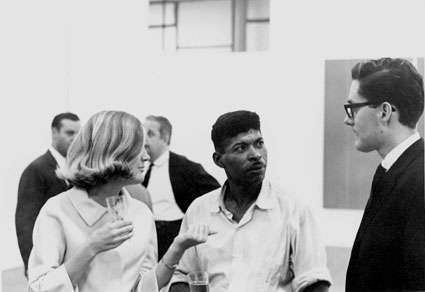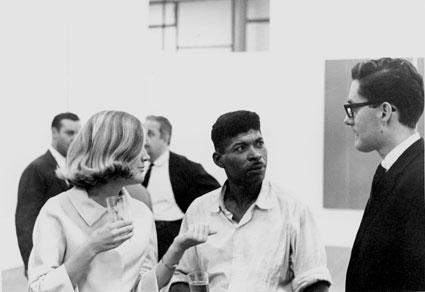It seems like everyone knows Dagny Corcoran. Even if you don’t, there’s a good chance you admired Art Catalogues, her store at MOCA’s Pacific Design Center location. Now, Art Catalogues is coming to LACMA, inside the Ahmanson Building. To celebrate the opening, here’s a little Q&A with the woman behind the project. Tomorrow we’ll tell you more about the store itself.
Q: How long have you been selling exhibition catalogues? Can you tell us a bit about the history of your business?
A: My first boss, and life-long influence, was Walter Hopps. In the '70s, as the Norton Simon Museum was taking over the Pasadena Art Museum, Walter told me to go and buy the archives of the Pasadena Art Museum, which the Norton Simon Museum was not interested in. That was my first inventory—I had the inventory before I had a store. The first Art Catalogues opened in 1977 above the Nicholas Wilder Gallery, on Santa Monica Boulevard. I was married to Jim Corcoran at the time, whose gallery was next door to Nick’s. Patty Faure and Betty Asher opened Asher Faure Gallery upstairs, next to Art Catalogues. Later, in the early '80s, Larry Gagosian’s gallery was on Almont Drive, and I rented a weird space from him, which is now Regen Projects I. Behind my shop was a storage space for Gagosian. Some days, a big truck would drive up and drop of loads of blank canvases. Then, a few hours later, a limo would show up, Jean-Michel Basquiat would get out, and they’d put him in there with the blank canvases and he’d paint. At that time, I was really the only place that sold exhibition catalogues. My customers were generally dealers and artists, people who were seriously interested in art.

Dagny and Walter Hopps (far right) with unidentified guest at the Sao Paulo Biennale in 1965. Photo by Hal Glicksman.
Q. What happened next?
A. I had my Barbara Stanwyck period and I moved to the country, where I bought a cattle ranch and learned about cowboys… I took the books and that’s where I cemented my mail order and library business. No cowboys were interested in my books. Five years ago, I came back and went to work for MOCA when Paul Schimmel approached me, and jointly we cooked up an idea to establish Art Catalogues there.

Dagny with Barnett Newman (back to camera) and Annalee Newman at Sao Paulo in 1965. "My job was to pour coke and lemon juice on Barnett's sculpture to make it rust." Photo by Hal Glicksman.
Q: Things seemed to have changed dramatically since you began your venture at MOCA; we’ve really begun to enjoy books differently. (Take for example our Reading Room.) How has digital consumption impacted your business?
A: The challenge now is to sell books to an audience who expects content to be free. I am all for free content, by the way. It’s also a challenge to sell on site here versus on Kindle or Amazon. But I like to think of a physical book as a sculpture, as a limited edition, as a print. Again, I agree that content is free but buying an object is a different thing.
Q: How did Michael Govan convince you that LACMA is the place to be?
A: He’s like a popcorn machine or a champagne cork, exploding with ideas. It’s wonderful to have the opportunity to catch one of those ideas and put it into reality. And to have the possibility of using the bookstore as a laboratory. That’s what I want to do.



